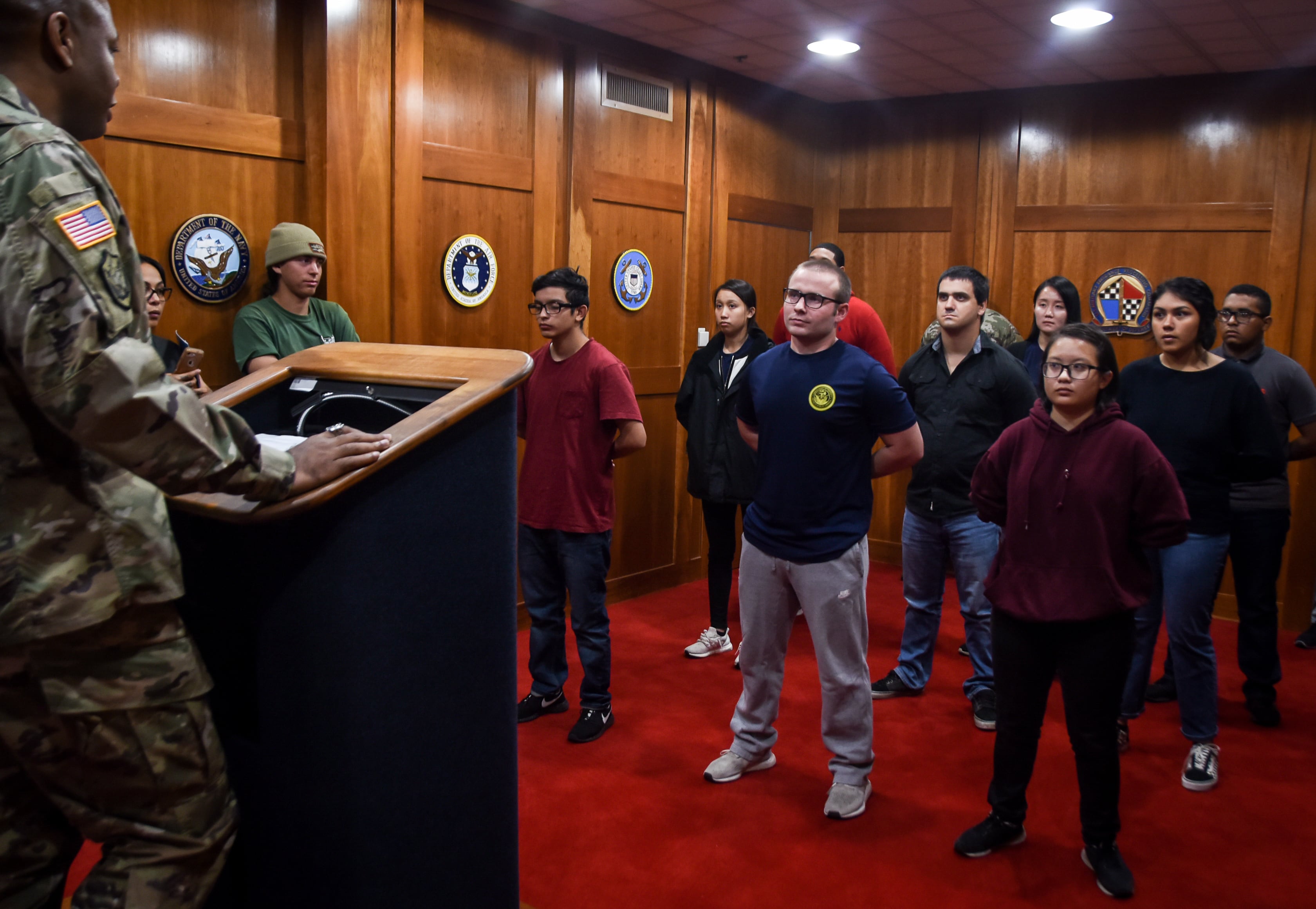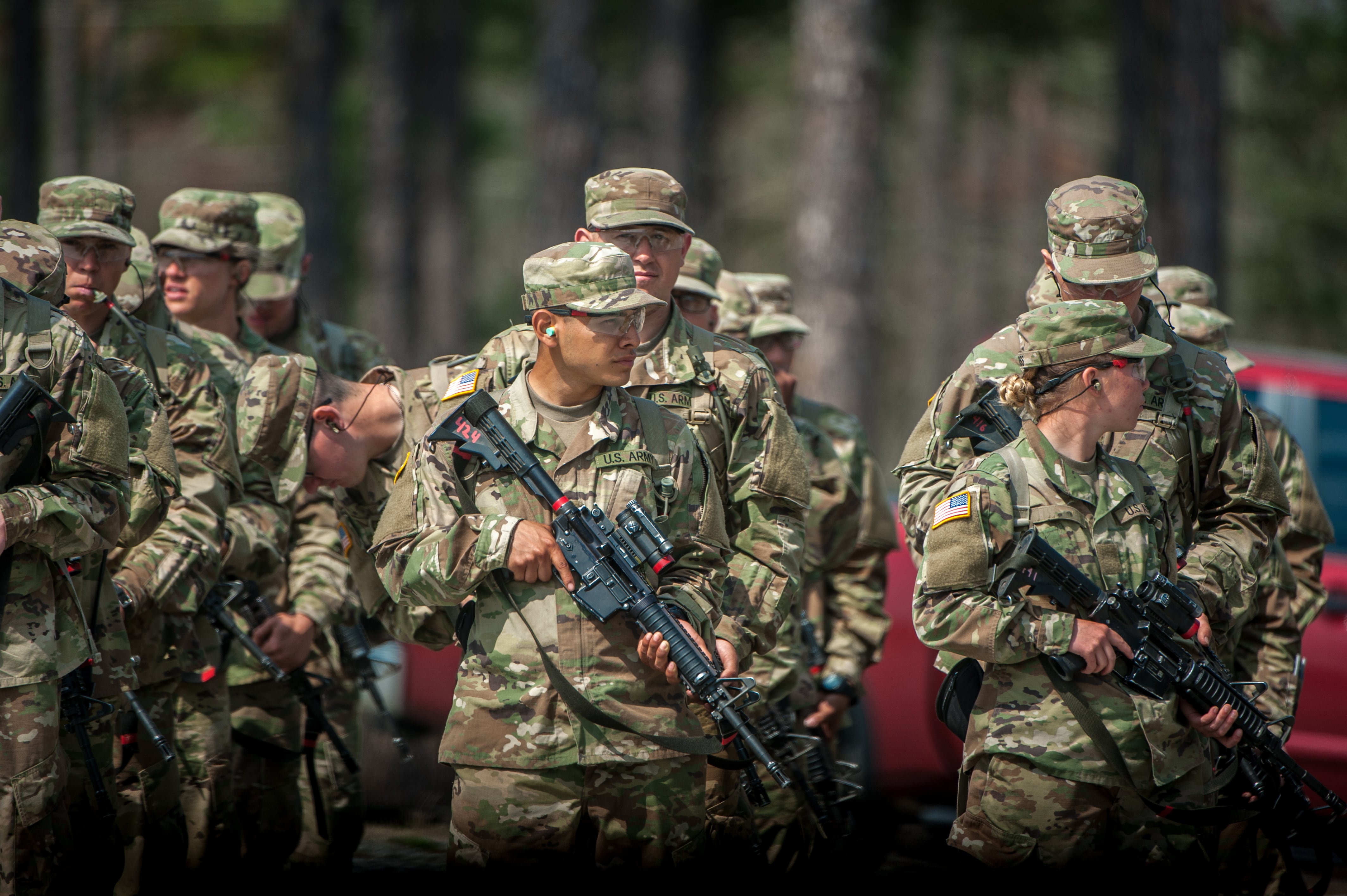The Army is going to virtual recruiting after shuttering brick and mortar stations, and has also cut in half the number of recruits brought to basic training, service leaders said Friday.
Medical screening of recruits found six new individuals with symptoms indicating possible coronavirus infections, though service leaders did not say at which point in the intake process those recruits were isolated from others.
“We have put extensive procedures in place,” said Army Chief of Staff James McConville at the Pentagon. “It starts at the state.”
Army officials are assessing the levels of infection in each state and screening recruits for symptoms before their arrival at military entrance processing stations, or MEPS, which all services send recruits through. Recruits are screened a second time at MEPS and then a third time at initial military training locations throughout the country.
RELATED

“They go into what we would call a quarantine even if they’re showing no signs, and then they begin training," McConville said.
The Army has reduced the number of arriving trainees and is running at about 50 percent capacity for recruit intake, he added.
During the screening process, the service was able to identify the six recruits who showed possible symptoms for the coronavirus.
The Mayo Clinic warns that signs and symptoms of the coronavirus may appear two to 14 days after exposure. Those signs include fever, shortness of breath and coughing. Some infected people exhibit no symptom, but can still be contagious.
McConville noted that the service plans to start paying recruits who expected to ship out to basic training in the coming weeks, but who were stopped due to the increased screening.
RELATED

“If they’re unable to ship because of the health reasons, we’ll bring them on the payroll,” McConville said. “We’re actually bringing them on active duty. They can stay and get ready in their community and once the situation is much better, they’ll have a chance to ship.”
The impact of closing recruiting stations and cutting new recruit intake in half is hard to gauge at this point.
“It’s all going to depend on duration. We’re looking at this really hard over the next 15 days," said Army Sec. Ryan McCarthy.
“We’re looking every day at what the experts are learning," he added. "Is this going to be a seasonal flu and then potentially boomerang in the late fall? Right now, it’s almost a tactical pause.”
McCarthy added that the Army has had a surplus of recruits this year and is doing well in hitting its targeted number of new soldiers.
During the budget rollout this winter, the Army updated its intended end-strength goal for fiscal year 2020 to 485,000 active duty troops — 5,000 more than the service originally planned — largely because of the strong recruiting numbers it obtained in fiscal 2019.
Kyle Rempfer was an editor and reporter who has covered combat operations, criminal cases, foreign military assistance and training accidents. Before entering journalism, Kyle served in U.S. Air Force Special Tactics and deployed in 2014 to Paktika Province, Afghanistan, and Baghdad, Iraq.





